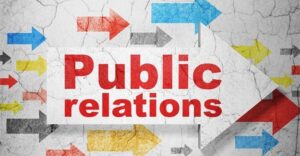Companies always need to stay on top of the target audience and its demographic and psychographic information, and more, to be able to create a buyer persona for each segment of the target audience. This is the best strategy for companies to provide their customers with personalized experiences, which is one of the driving motivators for purchasing decisions with most customers these days.
Essential information
Before a company can create a buyer persona, it’s important for companies to take the time and figure out which types of information they deem as essential to know beforehand. Some of the things that companies should always know about their consumers are demographic and psychographic information, their past purchasing habits, values, interests, and pain points, to be able to create a basic framework for the ideal customer of the business. All of this information can help companies create more personalized messages and communication efforts for the target audience, which is going to be a lot more likely to get those consumers to convert.
Gathering information
Companies won’t be able to get all the information that they need about the target audience to create a buyer persona from a single source, and most of the time, businesses have to go through a number of different sources to be able to find all the information that they will need. That’s why companies have to begin the process by analyzing all of the data that the company has generated on its current customers to figure out if there are any patterns with the current audience. Businesses can also ask for more information from their sales representatives and overall sales department regarding the consumers to learn more about their interests and purchasing behaviors, and even get help in figuring out the patterns. Another way that companies can gather all the information they might need is through lead capture forms, as well as surveys and customer interviews.
Analysis
Finally, once the company has all the information about its target audience gathered in one place, it’s time to analyze all of it for similarities and patterns. After that, the company can start categorizing different groups of the target audience according to their purchasing behaviors, preferences, job positions, income, locations, and more. Once the company has separated all of the potential customers into different groups, it can start creating the buyer personas with all the different patterns that overlap with various bigger subgroups of consumers from the target audience. Then, any company will easily be able to create detailed buyer personas for each segment of the target audience that will allow the business to provide each segment with more personalized experiences that will improve their buying journey and motivate them to convert a lot easier.




